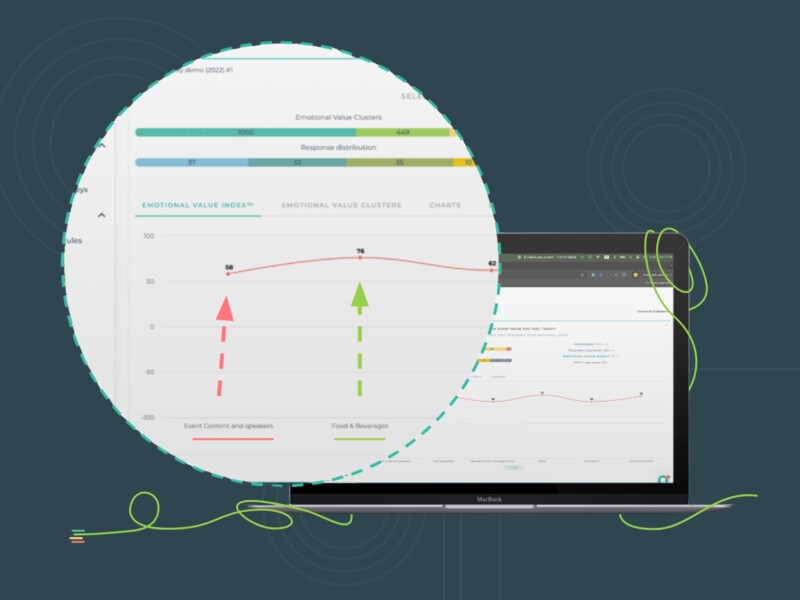A customer journey is not just an event of transactions. It is a much more meaningful interaction that can foster a deeper bond between the customer and the brand. And of course, emotions remain at the heart of a buying journey as they play a critical role in sparking interest, shaping perceptions, and affecting consumers’ buying behavior. Let us explore how customer sentiments influence each stage in the customer journey, ultimately impacting the client’s purchase decisions.
Awareness
As you might know, the awareness phase is when the customer realizes they have a need or problem but hasn’t identified it clearly yet. At this point, they are in need of information that clarifies and contextualizes their problem for better understanding.
The brand’s role at this stage is to transition the customer from their perplexed or confused state to a one where they could put a name to their problem. Make them aware about your business by presenting your solutions early!
In the awareness phase, it’s really about how you appeal to the client’s emotions with a solid brand presence and great marketing campaigns. A clear marketing message that addresses the problem and offers a solution can be a game changer here.
Consideration
As the customer evaluates your offer, they will be ticking off a myriad of requirements in their head. They will be weighing the pros against the cons to determine if the product offers them the optimum value. Even at this stage, the customer’s mood and emotions can play a big role. Despite the common notion, it’s not rationality that wins every time. Feelings of excitement and anticipation can make the customer forgo factors like price and choose the product.
The positioning of the product matters a great deal in this phase. For example, if the promotional materials evoke a sense of nostalgia or familiarity, the customer will more likely be considering it. Moreover, including clear descriptions and being upfront about the price can make the buying journey smoother, make customers feel at ease, and nudge them to the next step.
Web store pre-purchase emotional experience (Emotional Value Index (EVI®)) and conversion rate to purchases go hand in hand – see the graph below. This graph is from the case study about how Stockmann measures emotional experience. You can read the full case study here.
Purchase
Perhaps, it is at this stage that customers need to be supercharged with emotions in your favor! Many factors in the purchase stage can provoke or deter a customer from buying the product. A seamless purchasing experience with easy navigation, smooth payment systems, plenty of payment options, and less wait time can all contribute to customer satisfaction, strengthening their relationship with the brand.
So, it’s really about creating a positive shopping experience. On the contrary, if the website is poorly designed or there are issues in the payment process, it can tarnish the brand image. Customers often remember how a brand makes them feel more than they remember the specifics of a product.
The case study with Kekäle reveals that if customers experience joy or trust while shopping, the likelihood of a purchase decision is 40 percent higher than when they feel irritation or sadness – the difference is huge!
Post-Purchase
Loyal customers and advocates are born in this phase of the customer journey, and therefore, brands shouldn’t undermine the importance of maintaining the excellence of experience even after the purchase.
Positive experiences like prompt delivery, hassle-free return policies, and a great user experience can make customers feel joyful and come back in the future! It will also generate positive feedback, reinforcing the strengths of the brand. It’s also noteworthy that unhappy clients can do significant harm, especially if they choose to make their negative feedback public.
Measuring Emotions, Every Step of the Way
At the heart of every purchasing decision lies a complex web of emotions, but knowing how to navigate them and turn them in your favor is the key here. It is paramount that brands invest the necessary efforts to understand their customers well and know how they feel about the customer experience.
The Emotional Value Index (EVI®) is a metric designed to help companies measure customers’ emotions at every touchpoint or every stage of the buying journey. This way, it becomes easier to determine how customers feel, what should be improved, and how to evoke emotions that drive higher purchases!
Webinar Replay: How to Integrate NPS and Customer Emotions for Leveling Up CX Insights
At this webinar, Feedbackly’s Jaakko Männistö explained how to add measuring emotional experience to your CX program, how NPS and customer emotions can be measured together throughout a customer journey, and what should be the strategic role of both in your CX program.



